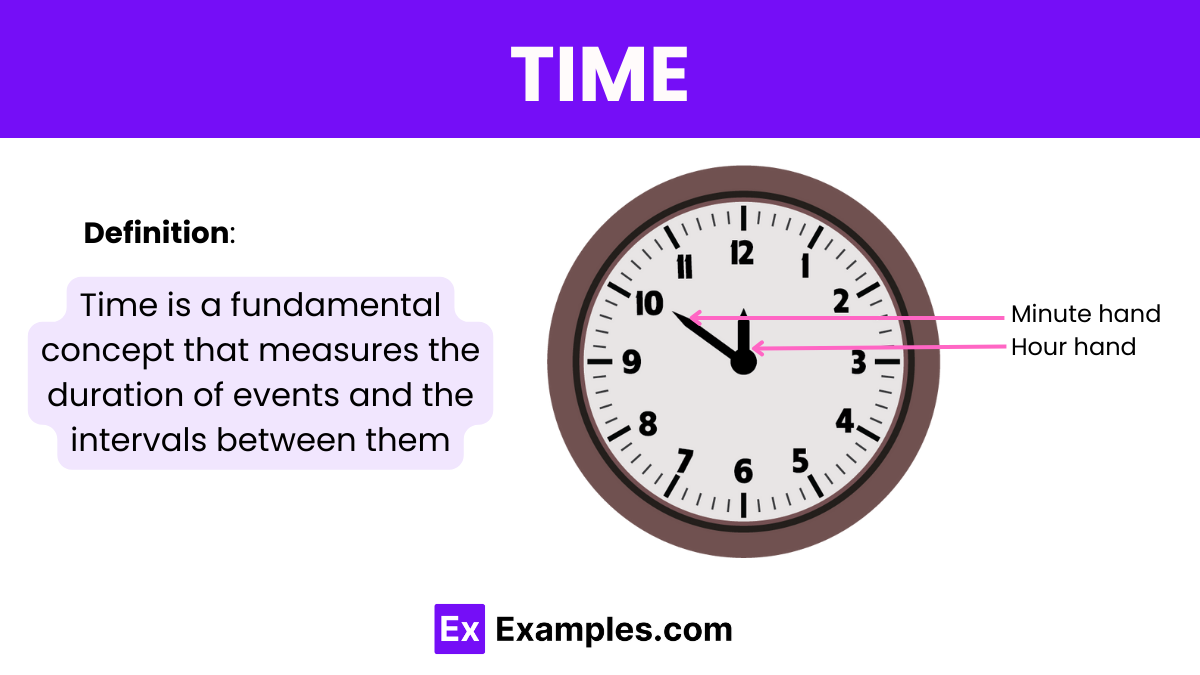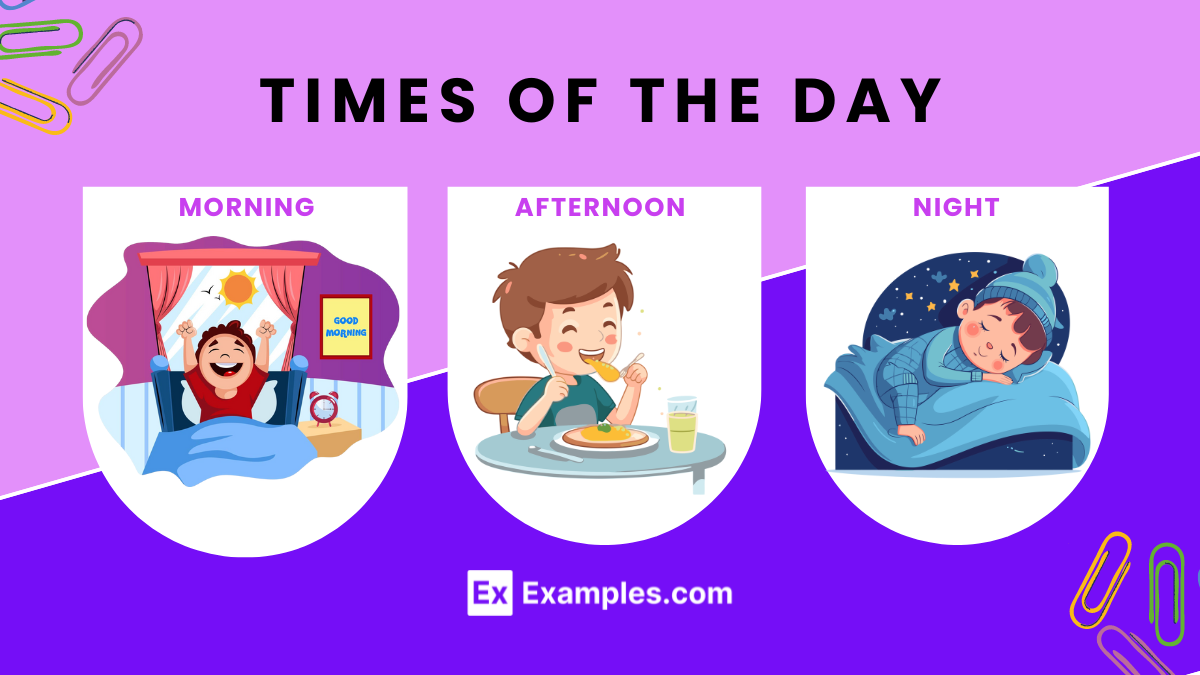How many seconds are there in 1 hour?
3600
7200
1800
600


Time is a fundamental quantity in both physics and everyday life, defined as a dimension in which events occur in sequence from the past through the present to the future. It is used to quantify the duration of events and the intervals between them. Time is typically measured in units such as seconds, minutes, hours, and years. It is a crucial component for understanding and organizing phenomena in the physical world, allowing us to schedule activities, sequence events, and understand the rate at which processes occur.
It is not directly observable but can be measured through changes or motion in the environment. Time is used universally to coordinate activities, schedule events, and plan our daily lives. It flows continuously from the past through the present to the future, influencing all aspects of the universe and human experience.

Measuring time accurately requires tools that range from basic to highly advanced, depending on the precision needed and the context in which they are used. Here are some common tools used to measure time:

Reading time on an analog clock involves understanding the position of its hands. Here’s a detailed, step-by-step guide on how to check the time on an analog clock:
Identify the Clock Hands:
Read the Hour:
Read the Minutes:
Combine the Hour and Minutes:
Consider the Context (AM or PM):
Optional: Read the Seconds:

Here’s a table showing the conversion of standard time units to other common units of time:
| Time Unit | Conversion |
|---|---|
| Minutes | 1 min = 60 seconds |
| Hours | 1 hr = 60 minutes |
| Days | 1 day = 24 hours |
| Weeks | 1 week = 7 days |
| Months | 1 month ≈ 30.44 days |
| Years | 1 year = 365 days (366 in leap years) |
| Decades | 1 decade = 10 years |
| Centuries | 1 century = 100 years |
| Millennia | 1 millennium = 1000 years |
Understanding how to convert time between different units is crucial for scheduling, coordinating events, and managing projects effectively. Here’s a straightforward guide to converting time to and from other common units:
The history of timekeeping is a testament to human ingenuity, spanning from ancient methods to modern precision:
Time is crucial across all facets of life for several compelling reasons:

Times of the day are commonly divided into specific segments that help structure daily activities:
Elapsed time refers to the amount of time that passes from the start of an event to its conclusion. It is used to measure the duration of activities or processes, helping to track how long something takes. For example, if a meeting starts at 3:00 PM and ends at 4:30 PM, the elapsed time for the meeting is 1 hour and 30 minutes. Understanding and calculating elapsed time is crucial for planning, scheduling, and assessing efficiency in both everyday life and various professional fields.
Minutes and seconds are units of time that are fundamental to daily timekeeping and are used globally to measure durations and intervals:
Minute:
Second:
Representing time can vary across different contexts and needs, from simple clocks to complex scientific notation. Here are several common methods for representing time:

Time is a fundamental aspect of everyday life and has a wide range of uses across various domains:
Time helps individuals and organizations plan their daily activities, manage deadlines, and schedule appointments effectively. By keeping track of hours and minutes, people can allocate resources, coordinate tasks, and ensure smooth workflows.
Time enables historians to track events, establish chronologies, and study the sequence and duration of historical happenings. Accurate timelines offer insights into how societies evolve and how key moments shape the present.
Precise timekeeping is crucial for navigation, particularly in maritime and air travel, where GPS systems rely on synchronized time to determine positions accurately. Even slight discrepancies in timing can lead to significant deviations in routes.
In scientific research, precise measurements of time are essential for experiments, data collection, and the validation of theories. Innovations in technology—like quantum computing and particle physics—depend on accurate time data to ensure reliable results.
Businesses use time to coordinate operations, manage productivity, and schedule meetings and deliveries. The stock market operates within defined time windows, and many financial instruments depend on specific timing for interest calculations and maturity dates.
Television, radio, and live events are scheduled at specific times to maximize audience reach. Time dictates broadcasting schedules and streaming content releases, ensuring that each segment or show airs when viewership is highest.
In today’s digital world, Time and Date Calculators play an increasingly important role in personal and professional settings. These tools help users quickly calculate the number of days between two dates, determine future deadlines, and plan events with precision. Whether scheduling international meetings across time zones or organizing project timelines, Time and Date Calculators offer fast, reliable, and accurate results.
They also assist in converting times across different regions, setting up countdown timers for significant events, and handling complex time-based arithmetic for tasks like interest calculations or milestone tracking. By integrating Time and Date Calculators into daily routines, individuals and businesses can streamline their schedules, reduce errors, and make well-informed decisions based on precise timing.
Here are some examples of time in everyday contexts:
In physics, time is a fundamental dimension that quantifies the duration between events, serving as a parameter to describe the sequence and timing of physical changes in the universe.
The formula to calculate time, especially in physics and motion, is Time = Distance /Speed. This helps determine how long it takes to travel a given distance.
The SI unit of time is the second. It is defined by the vibration frequency of cesium atoms in atomic clocks, specifically 9,192,631,770 oscillations of the cesium-133 atom.
Text prompt
Add Tone
10 Examples of Public speaking
20 Examples of Gas lighting
How many seconds are there in 1 hour?
3600
7200
1800
600
How many minutes are there in 2 hours?
60
120
90
150
What is 45 minutes past 3:00 PM?
3:45 PM
4:15 PM
3:30 PM
4:00 PM
How many hours are there in 3 days?
48
72
24
36
How many seconds are there in a day?
86400
72000
60000
36000
What is the duration between 9:15 AM and 12:45 PM?
3 hours 30 minutes
3 hours 15 minutes
2 hours 30 minutes
2 hours 45 minutes
How many minutes are there in a week?
10080
7200
1440
8400
What is 15 minutes before 5:00 PM?
4:30 PM
5:15 PM
4:45 PM
5:00 PM
How many days are there in 3 months (assuming each month has 30 days)?
90
91
60
88
What is the total number of hours in 2 weeks?
168
240
336
384
Before you leave, take our quick quiz to enhance your learning!

